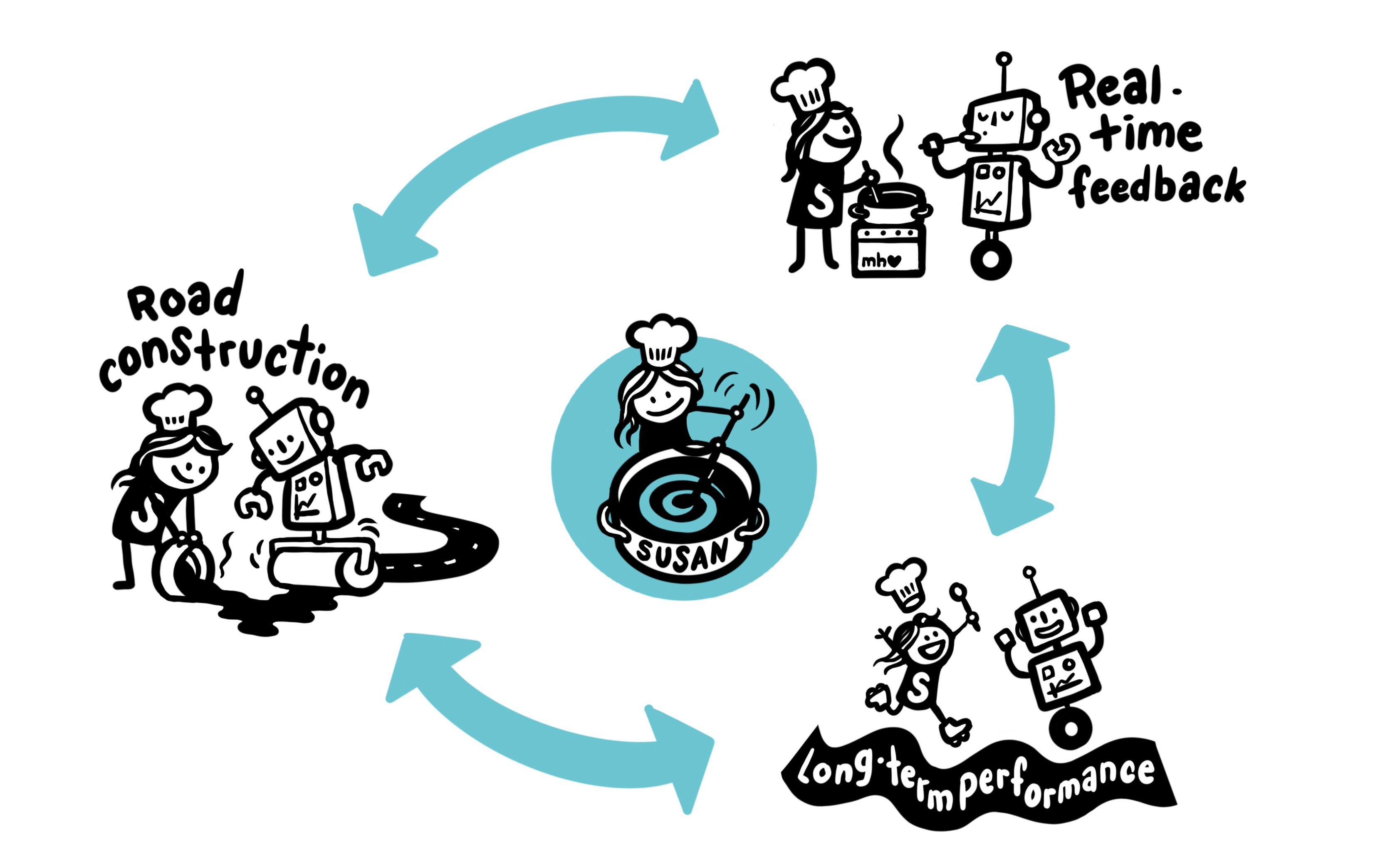Susan's Ride one of a kind to explore the full potential of smart road infrastructure
Construction and maintenance of roads and other infrastructure accounts for 25% of global carbon dioxide emissions. This could be radically reduced if smart road infrastructure reaches its full potential. But the field is largely unexplored. The test bed Susan's Ride at KTH wants to change that.

The smart infrastructure of the future - a platform that shapes systems of systems
Susan's Ride brings together intelligent construction machinery with computational modeling of road materials, road maintenance forecasting, edge computing and federated learning to demonstrate the potential of digitization to revolutionize road engineering throughout its lifecycle.
Traditionally, infrastructure has been seen as a way of getting from point A to point B. But it is no longer possible to see "the road" as an isolated part of the transport sector. With the advent of smart mobility, the role of physical infrastructure in the transport sector and the built environment needs to be fundamentally transformed.
Self-driving cars, dynamic charging of electric cars and communication between cars and the road are examples of areas that require system-level solutions to function sustainably in the long term. The smart infrastructure of the future is a platform that can include several applications that form systems of systems. But it puts entirely different demands on availability, security and efficiency.
A collaboration with data as the protagonist
Road owners, operators, electricity companies, vehicle manufacturers, transport and logistics companies as well as technology suppliers in digitization all need to cooperate for smart road infrastructure to become sustainable. In this collaboration, data is the protagonist. It needs to be collected through a combination of new sensors in the infrastructure already at the construction stage as well as in smart vehicles including the construction machines. In addition, it needs to be accessible to various stakeholders.
However, it is not only data that is required to successfully implement smart infrastructure. Empirical data is also required that provides information about the potential and the possible risks with the new technical solutions. And this is where Susan's Ride comes in.
Susan's Ride demonstrates climate and cost gains for the industry
The Susan's Ride test bed uses data to demonstrate technological possibilities, but also to investigate ownership, business models, standardization and regulations. There are a number of hurdles that need to be overcome before the full potential of smart infrastructure can be realised. Today, for example, not all the data collected in the construction phase is used further in the next phase. There is also no feedback of advanced data to those who manage the operation of the road.
In the testbed, three different schools and disciplines at KTH come together with major industry partners and form a critical mass of knowledge in smart road infrastructure, edge computing and federated machine learning. Also supporting the project is the already existing digital twin Campus 2030 . Together, they want to demonstrate both the climate and cost gains for the infrastructure and transport sector when smart road infrastructure reaches its full potential.
